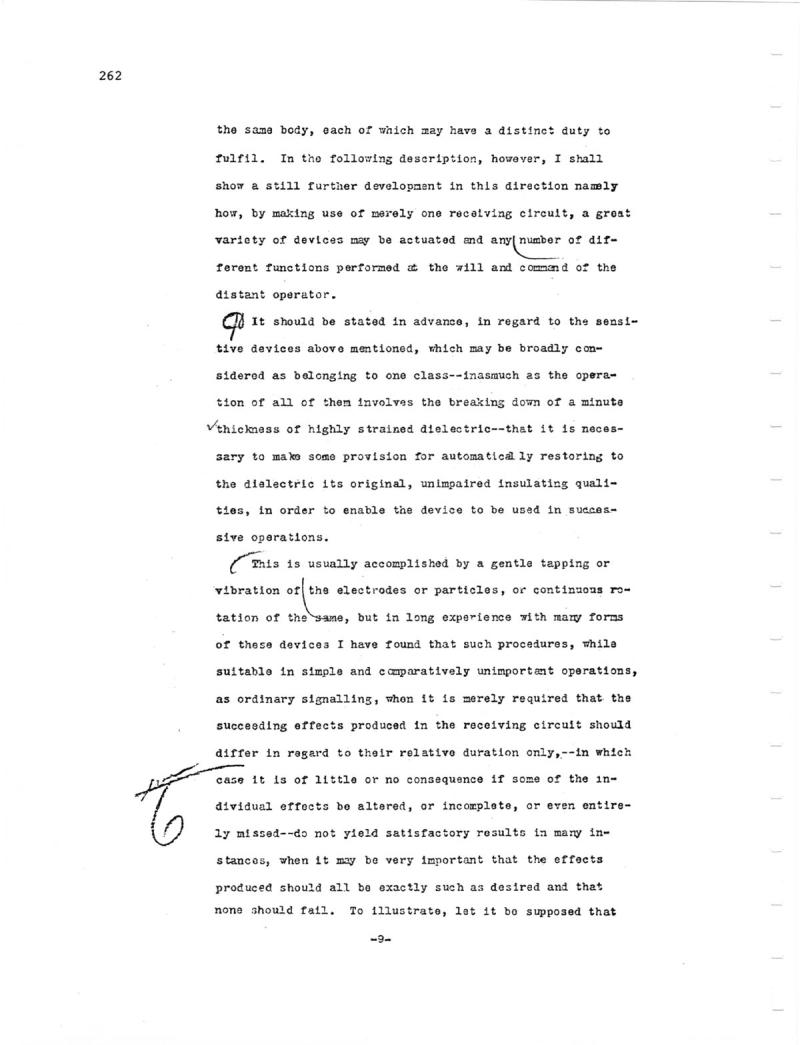
Nikola Tesla Patents
262 the same body, each of which may have a distinct duty to fulfil. In the following description, however, I shall show a still further development in this direction namely how, by making use of merely one receiving circuit, a great variety of devices may be actuated and any number of different functions performed at the will and command of the distant operator. qu It should be stated in advance, in regard to the sensitive devices above mentioned, which may be broadly considered as belonging to one class--inasmuch as the operation of all of them involves the breaking down of a minute thickness of highly strained dielectric--that it is necessary to make some provision for automatical ly restoring to the dielectric its original, unimpaired insulating qualities, in order to enable the device to be used in successive operations. This is usually accomplished by a gentle tapping or vibration of the electrodes or particles, or continuous rotation of the same, but in long experience with many forms of these devices I have found that such procedures, while suitable in simple and comparatively unimportant operations, as ordinary signalling, when it is merely required that the succeeding effects produced in the receiving circuit should differ in regard to their relative duration only,--in which case it is of little or no consequence if some of the individual effects be altered, or incomplete, or even entirely missed--do not yield satisfactory results in many instances, when it may be very important that the effects produced should all be exactly such as desired and that none should fail. To illustrate, let it be supposed that
